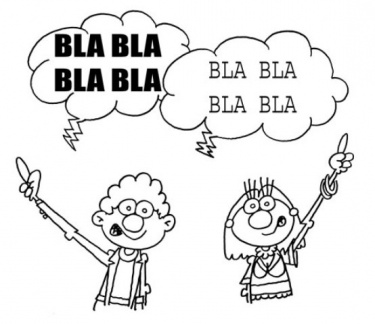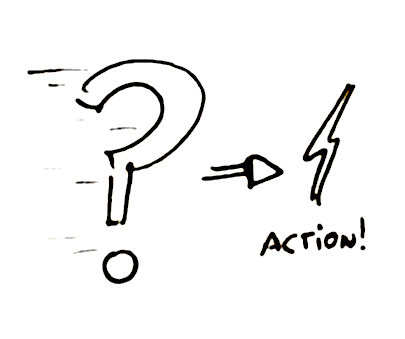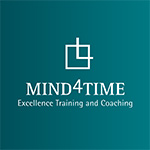Hello everyone! After a great summer break I'm back with more tricks!
This article will end CHAPTER II - ACTION-ORIENTED. So far we've seen the importance of action-oriented in introducing better control over the activity we want to move forward, specially on our own todo-lists and personal tools. But we don't work alone. Our activity is most of the times a piece in some bigger puzzle, and that piece many times a puzzle itself. All pieces coming together from different people and teams envolves a lot of communication, delegation, waiting, following up, etc... It's time we cover the positive impact action-oriented can bring into this interpersonal productivity context.
Working with others: the same action rules
Incorporating an action-oriented approach with others is not much different from what we've seen so far. The same intuitive trap of undecided issues can equally block the progress of a meeting or a delegated project. The same intuitive tendency we personally have to escape to e-mail and safe tasks, may happen in a meeting: nice conversations, many times discussing the past, wondering around well known areas of the problem. The difficult part is, like always, assuming risk into the unknown, and that comes to deciding actions. This search for concrete trackable action-steps can be demanding, but it's a very powerful orientation when communicating and discussing productively.
Communication: emotional/social content vs action-oriented content.
Whether you are writing an e-mail, talking on the phone or having a coffee break conversation with someone, you could pay attention to two types of contents, mixed up: emotional/social content and action-oriented content. On the first natural case, you may simply want to express yourself, share emotions, make some company, rethink out loud some experience, collect some sort of "I'm with you" feeling, whatever...  you don't have a specific "goal" so to speak. On the other side, you may be concerned about some team problem you want to move forward, so the content will be more about doing something towards a solution. Working productively is expected to be majorly about this last one... though the first is not dispensable.
you don't have a specific "goal" so to speak. On the other side, you may be concerned about some team problem you want to move forward, so the content will be more about doing something towards a solution. Working productively is expected to be majorly about this last one... though the first is not dispensable.
If (and only if) you want to take a communication opportunity to create motion around some topic, you want to guide the interaction towards the action-oriented content: defining actions. This can be done with a simple smooth question like "what are you suggesting be done, John?", which works particularly well when John's speech is rather lost in emotional/social content. Of course if what John wants is to share with you some frustrating episode with a client of his, he won't be really interested in "cutting the crap" and head to action definition. It all depends on the intention of the communicators. That's why an agenda is so important in a meeting: to synchronize intentions. Meanwhile, remember you are dealing with people, not robots: emotional/social content can be tamed, but will never be merely superfluous: it's the core of relations.
"What's the next action" culture
Asking the question: "what's the next action and who's got it?" can be intimidating. It must be clear you are trying to move things forward, and the question must be culturally acceptable, otherwise it can be interpreted negatively as some sort of aggression or accusation. Taking that into account, it seems a good habit starting meetings with something like: "Before we begin, what have we decided in the previous meeting about who was going to do what? Was it done (yes or no)?". This is action-oriented Status Report.
Status Report - dichotomic as possible
The concept of "deliverable" solves quite elegantly the need for a binary classification for activities in classical Project Management (and even in the Agile world). Is it delivered? Yes or no? Is it sent, tested, signed, paid for? Yes or no? Is it done? Yes or no? Did the first new invoice got printed ok under the new IT software? Yes or no?
 Whenever you loose this clear dichotomy you will accordingly loose clear control. The popular "completion rate" is a good example of a possible loss in meaning and control. "80% task accomplishment" may mean something tangible for things like linear production - "we have produced 8.000 units, 2.000 more to go", but it's not really great information for a task like "Prepare 2013 Budget Presentation". What's 80% of a presentation preparation? It may mean different things for different people. And how sure can you be the 20% left relate linearly to 1/4 of what the 80% took?...
Whenever you loose this clear dichotomy you will accordingly loose clear control. The popular "completion rate" is a good example of a possible loss in meaning and control. "80% task accomplishment" may mean something tangible for things like linear production - "we have produced 8.000 units, 2.000 more to go", but it's not really great information for a task like "Prepare 2013 Budget Presentation". What's 80% of a presentation preparation? It may mean different things for different people. And how sure can you be the 20% left relate linearly to 1/4 of what the 80% took?...
Clear action and deliverables definition help you keep your team's Status Report as binary as possible! Divide until you get trackable evident steps.
Action oriented vs Delegation and empowerment
It could seem at first that suggesting an action-oriented approach into interpersonal productivity in general - and more specifically into delegation - could be a threat to empowerment and people's autonomy development. In fact, delegating merely robot-specific tasks may be good to control enhancement, but might be a waste of decision competence. On the other hand, when the "issue" is too wide and specially too vague, things tend to slip away. Where's the sweet spot?
I'll be covering this in further detail under Interpersonal Productivity, but let me suggest right away a  balanced approach: dive into further detailed actions as much as you need control. If you delegate something and it's late (or you are afraid it might be), then you need more control = you need better specified trackable steps. If on the other hand you have time and there's not a great risk, and your intention is to grow your delegates' autonomy, go for higher level goal specification, only giving them achievement criteria: clarify the goal but let them control the path and the steps. At any time you can fine tune your level of control one way or the other, through the action-oriented "volume switch".
balanced approach: dive into further detailed actions as much as you need control. If you delegate something and it's late (or you are afraid it might be), then you need more control = you need better specified trackable steps. If on the other hand you have time and there's not a great risk, and your intention is to grow your delegates' autonomy, go for higher level goal specification, only giving them achievement criteria: clarify the goal but let them control the path and the steps. At any time you can fine tune your level of control one way or the other, through the action-oriented "volume switch".
Next action vs Purpose and Direction
Sometimes deciding a next action is just not possible. Or at least not yet. What's lacking? What happens when all the efforts for mining the gold of control - actions - fail? Typically, that will happen when the Direction is not clear. The Purpose of what we are trying to achieve may have been lost or changed in the middle of all the action. This will bring us to our next chapter - GOALS & DIRECTION. Before that, I'll sum up all the ideas we've covered so far under this Chapter II - ACTION-ORIENTED.
Mental resources used when executing are different from deciding ones. Counter-intuitively, deciding in general doesn't take much time, it rather needs mental availability, and is subject to strong unconscious risk avoidance. This means that the expression "haven't had time for that" only applies truly if the task in question is an action and not a blocked decision. Detailing tasks to a "robot-specific" level may help detecting that.
Avoiding decisions can get you under a deadlock full of growing pressure. Decide more! Procrastination can reflect different types of execution blockings, typically coming from a fear trap. Apply clever tricks to unblock execution.
The same action-oriented principles apply to Interpersonal Productivity, but take into account the need for emotional/social content in any human communication. Keep status reports binary as possible, but don't reduce your team to execution robots. It's developing their ability to decide that makes the jump to the next level.
1. "What's the next action" religion
Make sure your todo-list are doable. Be more specific, specially for items that you see being copied over and over again into next day's list. Use concrete visible evident verbs to define the next step.
2. Decide more
Deciding is risky. You'll naturally avoid risk, unless you make a conscious effort. Decide more often. Be brave, and choose the right time for making decisions: typically in the beginning of the day, or whenever you can clear some mental space. Use mindsweep often for that. You don't need the time you think you do. You need available brain and some guts.
3. Detect and solve execution blockings
Getting blocked is a natural safety procedure of your mind. Very well intended. Make an effort to understand it so you can go around it. Most common solutions are: a) define better the exact first step, b) be sure this is the task you want to do, c) try to eliminate uncertainty within the execution and learn to be ok with uncontrolled surprises, d) be confident you are going to both succeed and also be able to cope with whatever is the consequence of what you are starting.
4. Apply action-oriented to all communication
Working productively is many times about creating forward motion. Control the intuitive tendency to go into emotion/social content in conversations and meetings, guiding communication towards defining actions. Don't forget, though, that all relations need emotional/social content. Use the "Questions for Action" list.
5. Keep status report dichotomic
Action-oriented enhances control. The more evident a step, the easier to tag it "done" or "not done". Anything in the middle will lower the level of control over activity. Project management and general team status report can improve greatly following this binary principle. Beware, though, that developing decision competence is an important part of a leader's mission, so choose the level of specification you need, but don't waste precious resources turning people into robots.
I hope you've enjoyed this second chapter - ACTION-ORIENTED. I would love to hear your comments on this...
- Did you review yourself in some examples? Which?
- What was your favourite TRICK from this chapter?
- What obstacles make some TRICKs difficult or even impossible in your special case?
- What other TRICKs do you recommend concerning ACTION-ORIENTED?
Thanks for the feedback!...
Next chapter is: Chapter III - GOALS AND DIRECTION.
I'll begin with an article addressing how our brain projects desired scenarios and creates motion towards them.
Until then, try a TRICK!...
Gonçalo Gil Mata
www.WhatsTheTrick.com
NOW TRY A TRICK!...

|T| Questions for actions...>>
see more TRICKS - vote and comment on them!




the sweetness of life (with others) is to be able to balance the social/emotionl content of communication with the action-oriented content. Very precious tricks!